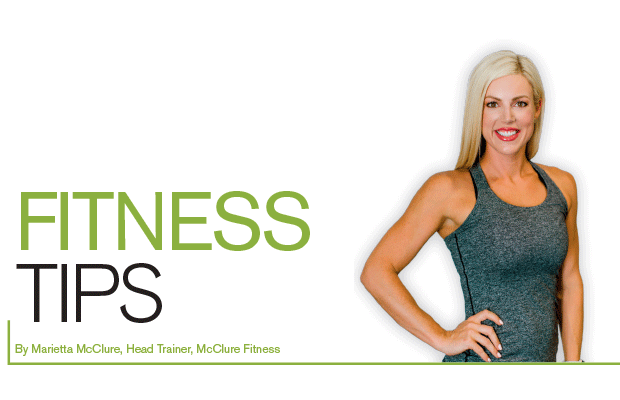You Are More Than a Number on the Scale

The scale. UGHHHH. It is so easy to get obsessed with a number and let it control your daily habits. But I would argue that it is just as easy to pretend that your weight doesn’t matter. If I’m honest, I have experienced both extremes. Here’s one truth to hold onto: the number on the scale does not define you.
Ahem…it does, however, matter if that number gets too high and starts to affect your quality of life. You’re not able to keep up with your kids or grandkids, your doctor puts you on blood pressure medicine at your yearly checkup or alerts you that you’re now at risk of diabetes and future health problems.
Check out these interesting numbers that have nothing to do with the scale, yet will help keep your quality of life up and your risk of health problems down.
Waist to Hip Ratio
The waist-to-hip ratio (WHR) is a measurement comparing the size of your waist in inches to the size of your hips in inches. The WHR is just one of several ways you can estimate your risk for cardiovascular disease and overall heart health. Calculating your WHR is easy to do, takes very little time, and doesn’t cost anything. In addition, you can easily track your progress as you slim down.
Your goal is to have an 8-10 inch difference between your waist and hips. Simply measure your waist at your belly button and your hips around the largest area of your bottom. For example, if your waist is 32 and your hips are 42, that difference falls within the healthy range. But if your waist is 42 and your hips are also 42, you would fall into the risk range.
Keeping track of several key measurements is an encouraging way to keep you motivated when the scale doesn’t move as quickly as you’d like. Simply keep a dated log of your arms, chest, waist, hips and legs. Measuring every two weeks is a good starting point to track your results.
Heart Rate
Maximum heart rate is an estimate of the highest recommended heart rate a person should reach while exercising strenuously. The usual formula for calculating maximum heart rate is 220 minus your age.
220 – 40 years old = 180 max heart rate for strenuous exercise, like running.
It becomes more important to be aware of your heart rate as you get older.
Note: the better shape you are in, the lower your resting and active heart rate. When you first start exercising, do not be surprised if your heart rate surpasses your “zone,” but be aware that your heart is a muscle and it will get into better shape as you consistently exercise it.
Not long ago, it was difficult to know exactly what your heart rate would be during a workout, but now there are many fitness trackers available. Apple Watch, FitBit and Garmin are several brands with good fitness trackers that can monitor your heart rate while you exercise. They make it easy to keep track of your progress, which can also motivate you to work harder if you’re not reaching your maximum heart rate zone.
These trackers also tell you how many calories you’ve burned during a workout and how far you’ve walked or run, which can encourage you to keep challenging yourself during your workouts. If you can get uncomfortable just for a little while, your heart will get stronger, and that will keep your cardiovascular health in great shape.
Blood Pressure
Having high blood pressure forces your heart to work harder. It increases your risks for heart disease and stroke, as well as for kidney disease and heart failure. You can have high blood pressure and never know it or feel it, so it’s important to get tested routinely.
Get tested every two years if you have normal blood pressure, once a year if your blood pressure is high-normal (between 120/80 and 139/89). Ask your doctor how often you need to be tested if your blood pressure is high (140/90 or greater).
What’s a healthy blood pressure? According to Harvard Health Publishing, less than 120/80 mm Hg.
Exercise
The one thing that will improve all of the above numbers is EXERCISE!
Get at least 150 minutes a week of moderate aerobic activity—such as brisk walking, swimming or mowing the lawn—or 75 minutes a week of vigorous aerobic activity—such as running or aerobic dancing. You can also do a combination of moderate and vigorous activity. You can achieve more health benefits if you ramp up your exercise to 300 minutes or more of moderate aerobic activity a week.
Application time! I’ve put together an ideal weekly workout program for you that will get and keep your heart rate to a healthy zone, your waist to hip ratio appropriate and keep your blood pressure down.
FIVE workouts a week for 45 minutes each (225 minutes for the week) is ideal. I think this is the sweet spot because it’s more than the recommended minimum of 150 minutes, but less than the 300 minutes or more.
Sunday: Rest Day
Monday: Aerobic Day: 45 minutes of heart max movements: running, boot camp, intervals. Your heart rate should hit its max several times during the workout.
Tuesday: Strength Day: 45 minutes of lifting hand weights or body weight like squats, pushups, lunges or barre or Pilates class. Heart rate will elevate, but not to the max.
Wednesday: Rest Day – Try a Yoga class!
Thursday: Aerobic Day: 45 minutes of heart max movements: running, spinning, swimming, boot camp, etc. Your heart rate should hit its max several times during the workout.
Friday: Strength Day: 45 minutes of lifting weights or body weight like deadlifts, chest press, sit-ups or barre or Pilates class. Heart rate will elevate, but not to the max.
Saturday: Aerobic Day: 45 minutes of heart max movements: spinning, running, boot camp, intervals, etc. Your heart rate should hit its max several times during the workout.
Reminder! If you’re just starting out, begin with two days a week and add an extra day every two weeks until you’ve built up to five days. Start moving your body and focus on the numbers that affect your health and quality of life, not the number on the scale.









0 comments